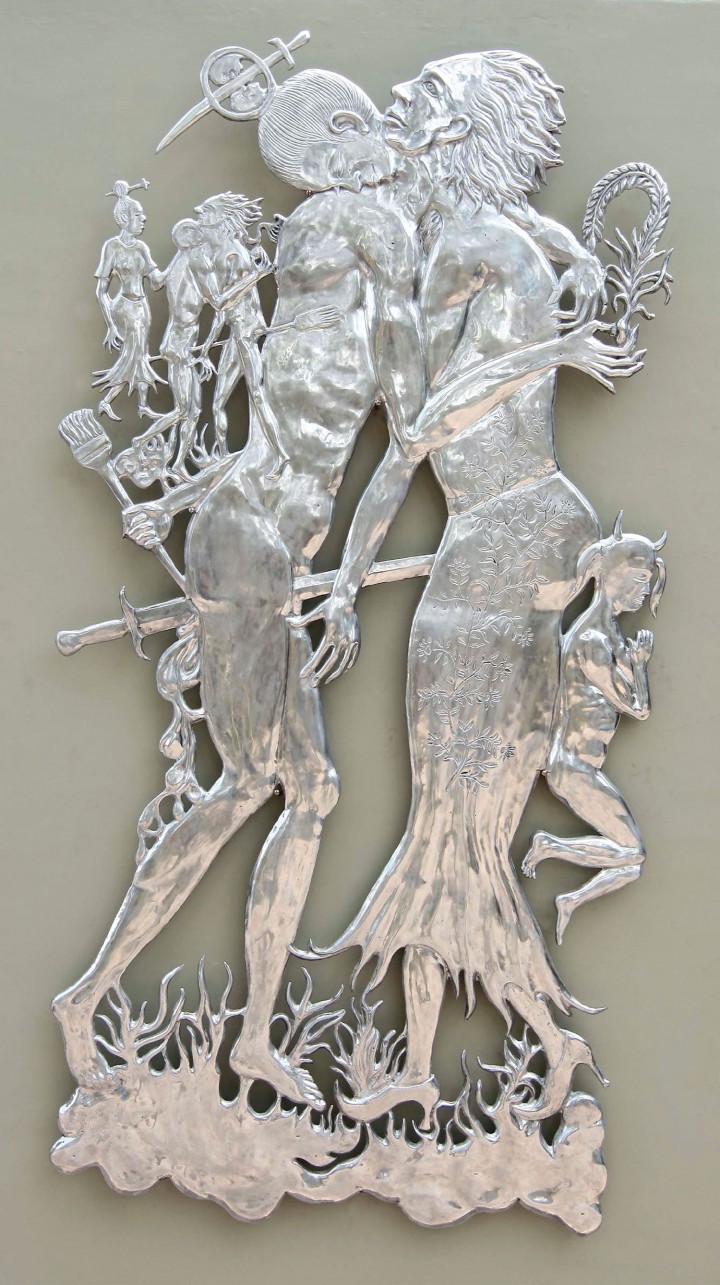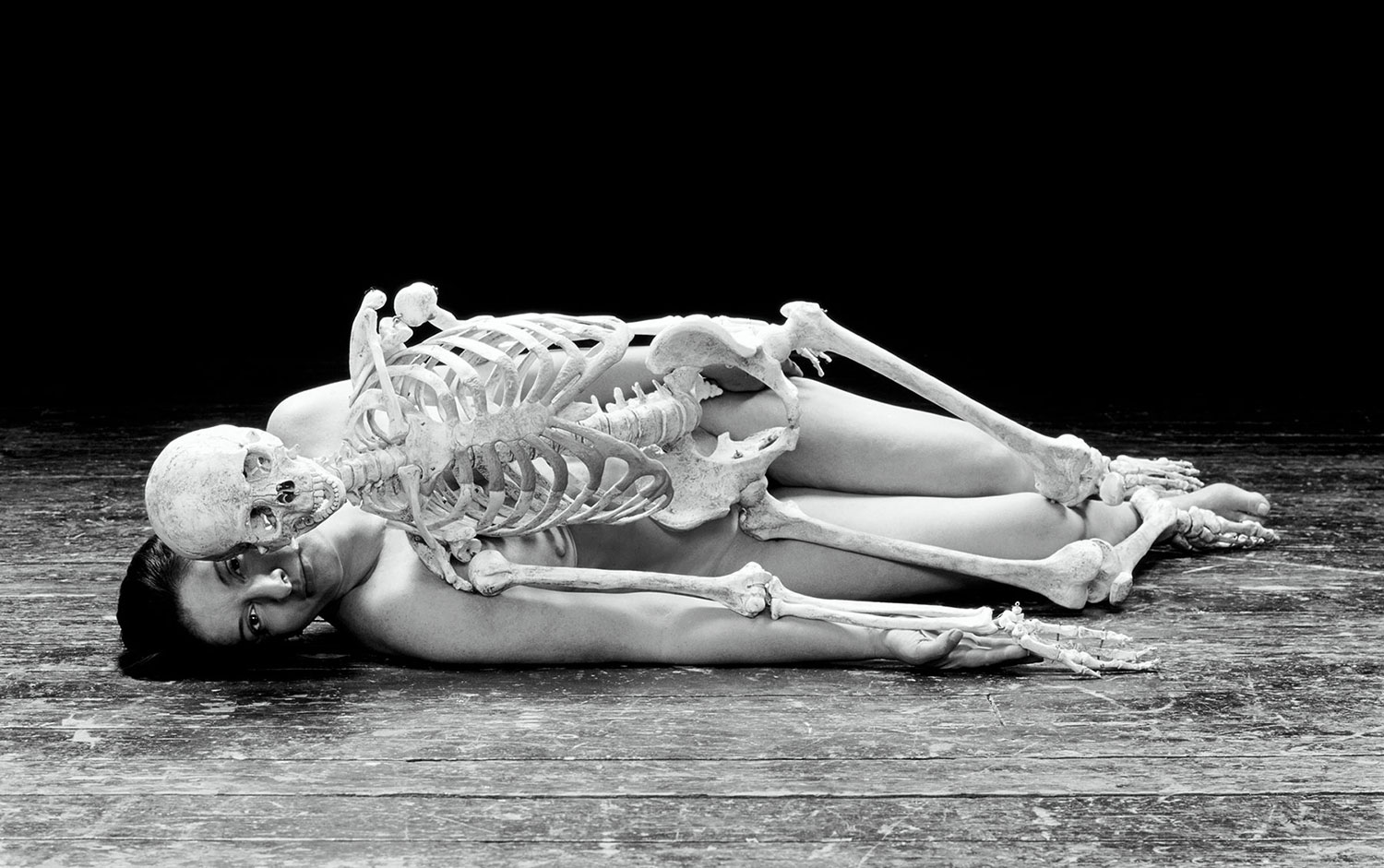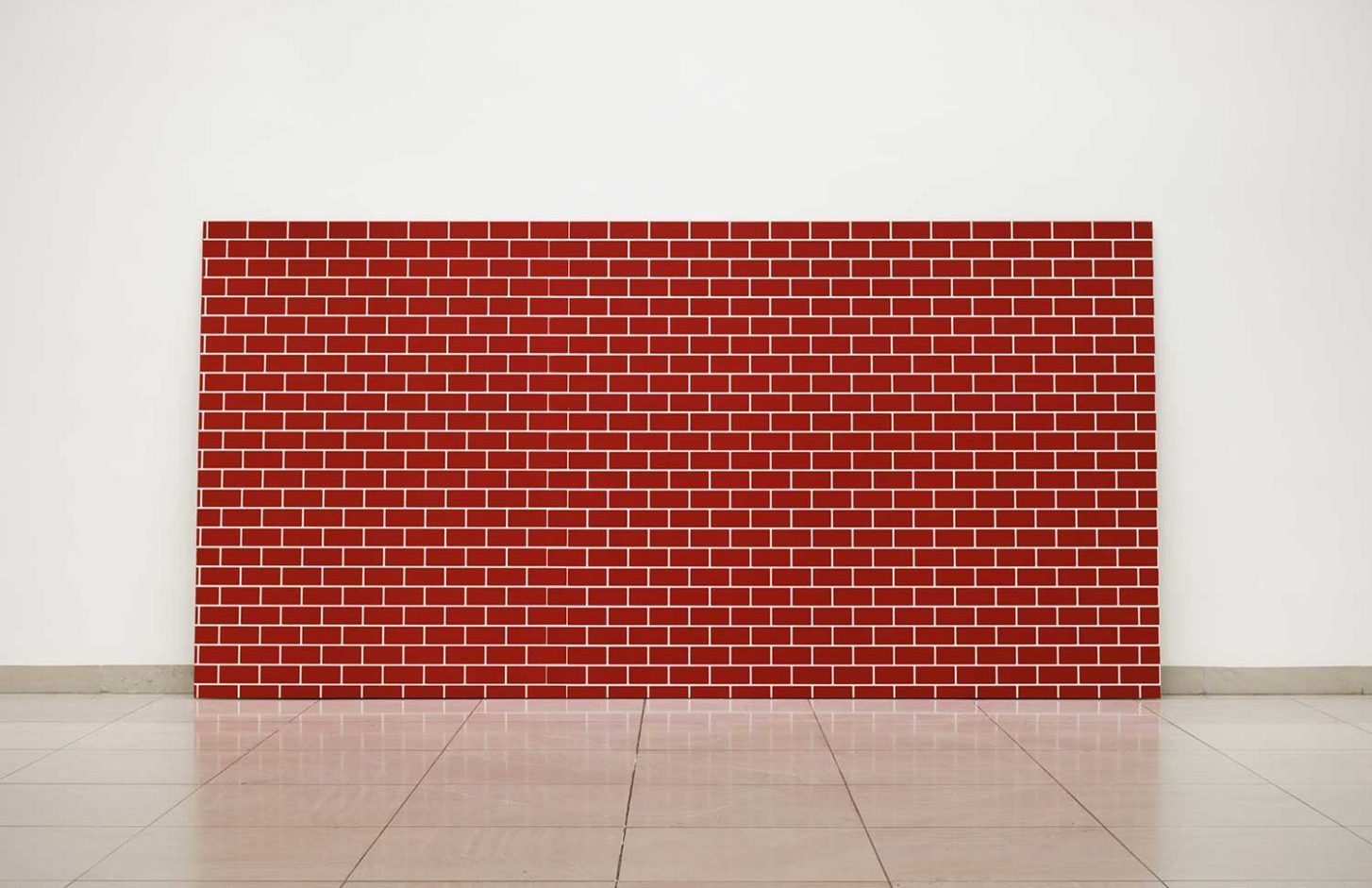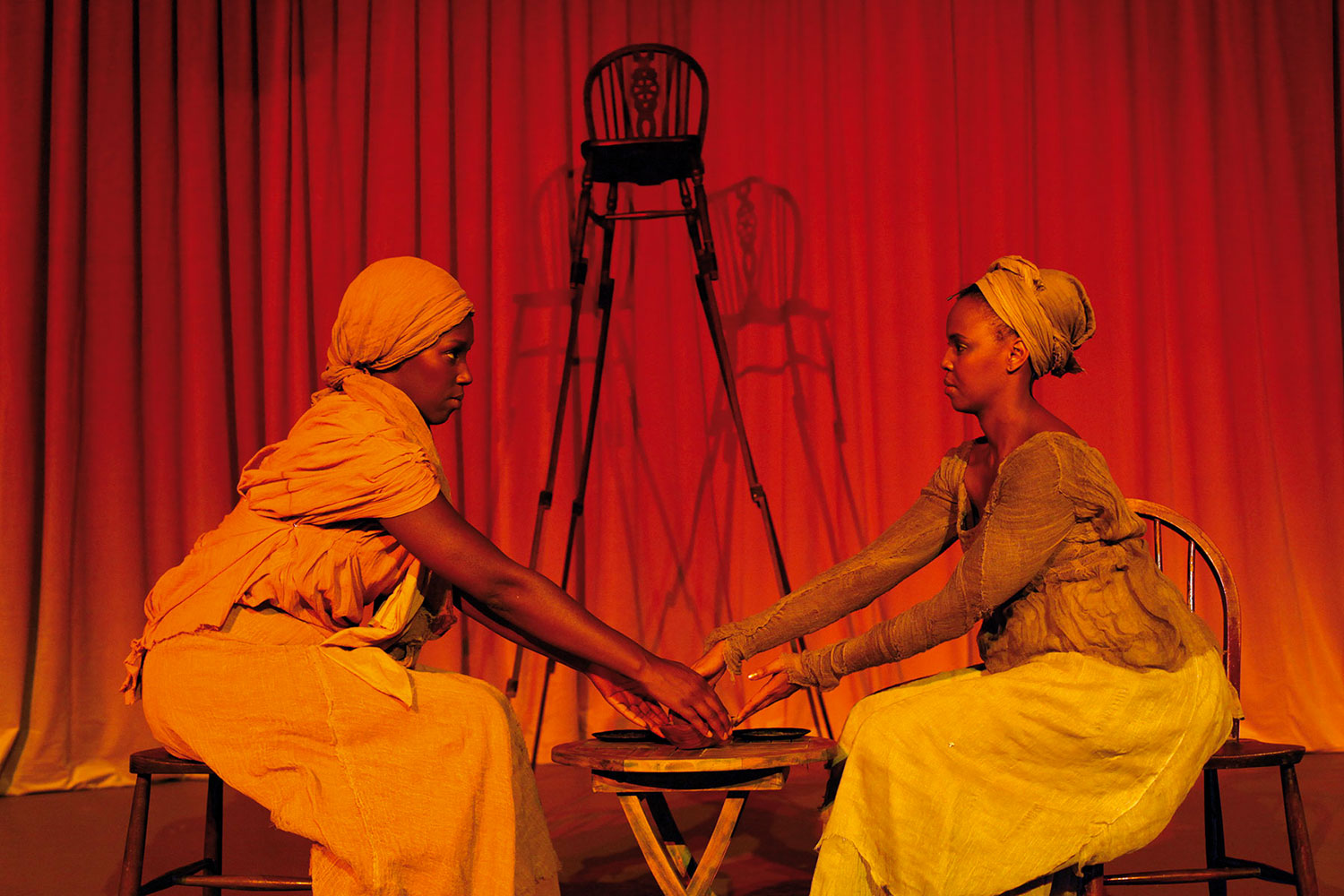
The culmination in 1949 of the Indonesian National Revolution to gain independence from Dutch colonial power required the creative use of symbolic influence and tactical resistance by the Ninth Sultan of Yogyakarta. His subversive application of Javanese spiritual and political identity as a tool to foster national solidarity and differentiate local from Western will secure his place as an iconic figure in the national imagination. Adept at harnessing the power of socio-political narratives and assessing foreign (mis)perceptions, key Indonesian artists today function within this historical precedent as sultans, consciously playing many roles. Part public persona, part back-room negotiator and part cultural innovator, these artists are not only creating subversively critical art, but are structuring the systems that consume it.
The video installation Earthquake (2010) by Krisna Murti, a pioneer of new media art in Indonesia credited with linking traditional performing arts and performance, exemplifies his approach to landscape as a site of stability, resonance and cultural identity. The gently lapping waves of the video projection belie the cataclysm the title implies, while the female performer functions as an agent of contingency suggesting unforeseen events. Murti relates the trauma of natural disaster with moments of upheaval in life, signaling a turning point that manifests in a before and after, forever divided yet inextricably linked. The work, recently exhibited at the XI Jogja Biennale, subtly acknowledges Indonesia’s historic inability to effect political change without destructive turmoil (note for example how the devastation of the 2006 tsunami altered the collective consciousness and launched a period of peace in the contested region of Aceh). “Video is a construction of the mind and it is an important democratic tool; it can explain the world in the same way that Javanese wayang puppet theater does,” Murti has observed.
Jumaldi Alfi conversely uses schoolroom blackboards as the site of negotiated opinions and questionable propaganda, exposing the subterfuge of institutional authority and dominant discourse in the art world. Just as the Ninth Sultan of Yogyakarta famously stated, “Even though I have tasted Western education, I am still and will always be a Javanese,” Alfi’s series of blackboard paintings repudiate the superiority of Western thoughts and norms and present an alternative, edited visual thesis. In Blackboard Series: Paint for Me #1 (2010) included in the exhibition “Life/Art #101: Never Ending Lessons” at Sangkring Art Space in Yogyakarta, Indonesia, and Valentine Willie Fine Art in Singapore, he recreates a wooden border through the deceptive use of trompe l’oeil, a ploy that cleverly questions the usefulness of imported Western frameworks. The cacophony of English phrases and words scrawled across the surface, like “art ≠ you” or “are you still alright okay..?” and “never mind,” reflect often futile efforts by Indonesian artists to come to terms with expectations about contemporary art practices that please specific aesthetic or thematic preferences. What takes this work to another level of complexity, and highlights Alfi’s delight in subversive resistance, are the three large letters spelling out “FIN” in masking tape. Is this part of “fine” as indicated by the erased “e” on the right? Or does he simply want to proclaim, “finished — I’m done with this, I’ve moved on”? The answer seems to come in a work from the same period, Blackboard Series: The End (2010), which proposes: “I think there is something dangerous going on here.”

Whereas Alfi’s clean aesthetic accommodates Western modes of expression, the work of Nasirun — glossy, colorful paintings heavily populated by overlapping stylized shadow puppets and mythical Javanese totems — employs a network of scratched lines and thickly layered rainbow hues reminiscent of batik fabric and tourist mementos. Trained as a batik artist before entering the Indonesia Institute of the Arts, Nasirun’s entire oeuvre is aimed at substantiating his public persona as an authentic Javanese male: outwardly humble, respectful of village ways, protective of tradition, spiritually powerful, economically successful and financially clever. He doesn’t drive, doesn’t own a cell phone, doesn’t speak a word of English, but laughingly welcomes a stream of visitors dressed in a sarong and chain smoking clove cigarettes while overseeing the construction of a museum of forgotten Indonesian artists across the street from his home. Nearly every surface of his massive adjacent studio reflects a decorative sensibility, in total opposition to a clean, modern design style that eschews kitsch and low art. He is a wildly popular and well-collected artist in Indonesia, yet has only exhibited outside his home country one time in the last five years. His purpose-built identity, which resists the paradigm of the colonizer and the colonized, allows power to reside in the decorative and exotic, and functions as a conceptual construct used to subvert understanding and deny access to outsiders. In a photo and drawing collage published in the catalogue for his exhibition “Salam Bekti” [Expressions of Respect] held to commemorate the 1000th day of his mother’s death, we see a synopsis of Nasirun’s artistic narrative. The artist, his wife and three children are spread out across a white field, while strategic doodles and a few lines of text tell the story of their comfortable and traditional life and roles; an Indonesian flag sprouts out of Nasirun’s peci, a hat with secular nationalist connotations made popular by Indonesia’s first president, the smoke from his cigarette turning into a storm cloud labeled “lucky rain” that splashes his wife. Each child is marked by symbols of abundance, good fortune, protection and love — the gifts of success and influence. This work constitutes a navigable diagram of identity; a Rosetta Stone of sorts that can only be read by the initiated, and which cunningly excludes interpretation by those who scornfully dismiss its relevance to contemporary experience.
Like Ashley Bickerton, who has lately emerged from a self-imposed exile in Bali, Fendry Ekel has in recent years returned to his homeland with a profoundly altered awareness of the role of memory and artifice in history and art. Having lived in the Netherlands since the age of 14 when his family emigrated from Indonesia, Ekel creates artwork and institutional structures that simultaneously craft and consume messages about ego and influence. While his studio practice falls within traditional lines of production, primarily creating well-researched and beautifully executed works on paper, Ekel’s institutional practice as co-founder of Office: for Contemporary Art (OFCA), which started in Amsterdam and recently moved to Yogyakarta, focuses on developing organizational networks and “structural friendships.” By consciously adopting the conflicted roles of both the romanticized studio painter and art world insider/strategist, he twists clichés and demands we pay close attention to history and inner prejudice. Take for example the lifecycle of his iconic Young Gropius As Soldier (2007), an image that both illuminates and obscures the identity of an historic public figure by complicating the story of Walter Gropius, the director of the highly influential Bauhaus, with unsettling and questionable references to his military history in the German army. Once completed, the artist distanced himself from the creative impetus through strategic efforts as an employee of OFCA to place the work in the public realm through exhibitions and publications, thereby legitimizing its value and ensuring its consumption. This effort is, in fact, part of the conceptual completion of the work and reflects Ekel’s efforts to “pull the strings” of a system that demands his assimilation/loyalty and yet refuses entrance on grounds of his “otherness.”
The burden of physical and psychological dislocation and its impact on various “states of being” is at the core of Entang Wiharso’s artistic practice. Since 1997, and during the tense and troubled years after 9/11, Wiharso divided his time between the US and Indonesia, acutely conscious of his identity as a Muslim male foreigner married to an American woman. Like Ekel, his experience of being continuously and mistakenly associated with a host of assumptions about his beliefs, affiliations and ambitions led to a distancing from both his home and adopted society. In 2007 he began to process these experiences through the figure of Black Goat, a protagonist burdened with the double association of the outsider (black sheep) and the socially stigmatized scapegoat. Inspired by the nearby stone reliefs at Prambanan Temple, a 9th-century Hindu shrine dedicated to the Trimurti, the expression of God as the creator (Brahma), the Sustainer (Vishnu) and the Destroyer (Shiva), Wiharso began experimenting with wall-mounted cut-out and caste aluminum sculptures that married a comic book sensibility with moral narratives about infatuation, intolerance, retribution and love. Reflective of contemporary reality, but with roots in ancient Javanese stories, his series “Comic Book” (2009) explores the complexity of human desires. The emotional state and physical manifestations of obsessive love represented in Possessive (2009) link religious fanaticism with infatuation, suggesting that an unchecked craving to possess can ultimately annihilate the object of desire. The entwined male and female figures clutch each other while carrying weapons of violence, organic symbols of abundance and tools of self-expression (the paint brush). Impaled and twisted, the mutual pain and pleasure of their condition is enhanced by the seductive, shiny surface, which reflects back at the viewer the surrounding environment. The diminutive, long-eared goat figure to the right clasps his hands in a silent prayer, connected to the beloved as an observer and witness.

While Wiharso’s work often employs Javanese codes to communicate specific ideas, Angki Purbandono’s innovative “scanography” photographs spotlight ephemera that might look unimportant or unrelated and allows viewers to each bring their own associations to the items, creating open-ended stories. Instead of taking pictures using a camera, Purbandono composes a still-life of objects on a scanner’s glass surface, eliminating a sense of distance and capturing hyper-real detail in the printed image. Mounted and illuminated via a neon light box, the final work has a sexy, lustrous, commercial appeal. In Fighter (2009), an anonymous black-and-white photograph of a kimono-clad figure brandishing a samurai sword is nestled within a composition of raw seafood, the eye of an octopus staring out over the price tag of this pre-packaged sashimi delight. Part of his “Memories” series created during a residency in Fukuoka, Japan, the image brings history and stereotype into the present through familiar symbols of Japanese culture. With a degree in photography from the Multimedia Department at the Indonesia Institute of the Arts, Purbandono has conducted research-based photographic experimentation at home and abroad and promoted Indonesian contemporary photography as a founding member of Ruang MES 56, an artist initiative in Yogyakarta. This influential and respected non-profit, which was established in the living room of a shared rental home in 2002, is on the forefront of transforming and legitimizing photography as an accepted art form in contemporary Indonesian art.
Samuel Indratma is another artist interested in expanding the impact of art through artist-generated projects and initiatives. With a philosophy that parallels the street artists of San Francisco’s Mission School art movement, including a visual affinity with graffiti artist Barry McGee, Indratma’s public mural projects and collaborative working style have transformed the streets and alleys of Yogyakarta. As a prominent member of the activist group Apotik Komik (1997-2005), which considered their public art an instrument of communication with the rakyat, Samuel engaged with local communities and government officials to reclaim public space for ordinary citizens after the downfall of Suharto’s New Order regime. Embracing slogans like “the city is my canvas” and “my work is vernacular art” his current production includes installation, large-scale paintings, manipulation of found objects and print-inspired works on paper. In one of the works from “Our Father in Heaven” series (2011), Indratma inscribes a more intimate, personal manifesto, “to always love, to always get lucky through that which is loved” in lyrical script across a small portrait in black ink composed over a swirl of pastel hues. These works reflect less the activist and more the family man, a position of responsibility shared by many Indonesian artists with large families at an early age.
The pervading sense of responsibility these seven artists share in their position as “Sultans” — the desire to take action, to critique and provoke, to play multiple roles — reflects familial and community fidelity and cultural stewardship. Perhaps it is this camaraderie and public responsibility that is at the root of what makes Indonesian art different and fresh.





